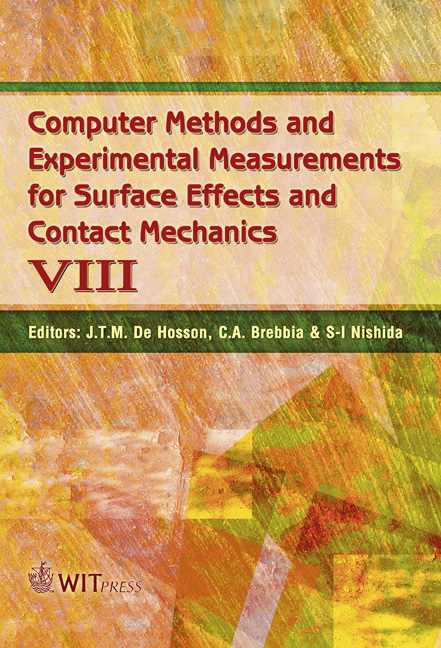Explosive Pitting Of 1018 Steel Witness Plates
Price
Free (open access)
Transaction
Volume
55
Pages
8
Published
2007
Size
4,341 kb
Paper DOI
10.2495/SECM070171
Copyright
WIT Press
Author(s)
G. A. Walsh & V. D. Romero
Abstract
1018 steel witness plates were put into contact with the explosives Ammonium Nitrate and Fuel Oil (ANFO), composition C4, dynamite, flake trinitrotoluene (TNT), smokeless powder and black powder. Explosive-induced pitting of the metal targets was observed in tests involving C4, dynamite, TNT and smokeless powder. The microstructure directly under pitting sites was examined using standard metallographic techniques. No sign of melting was observed under or around the pits, indicating that pitting is most likely caused by impingement of hard particles on the metal surface during combustion of the explosive material, or by jet formation from the collapse of voids at the explosive/target interface. Keywords: explosives, explosive pitting, explosive-metal interactions. 1 Introduction Pitting is a phenomenon that occurs on metal surfaces in contact with, or very close proximity to, detonating explosives [1]. This pitting of metals is often used in forensic investigations to indicate the occurrence of an explosive event [1], [2]. The cause of explosive pitting is, however, the subject of some controversy. Pitting has been said to be caused by the impact of high velocity particles (either unconsumed explosive or inert) [3]. Another theory is that small jets formed by the collapse of voids at the explosive / metal interface produces pitting [4]. Additionally, claims have been made indicating that the explosive event generates enough heat to melt small portions of the metal surface, creating small pits upon solidification [5].
Keywords
explosives, explosive pitting, explosive-metal interactions.





